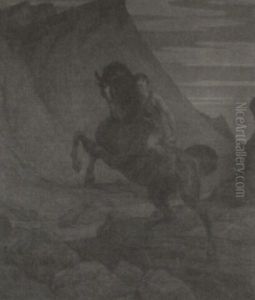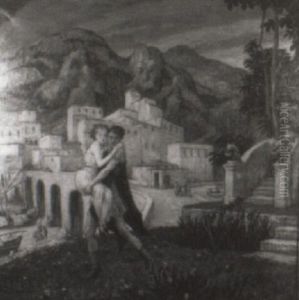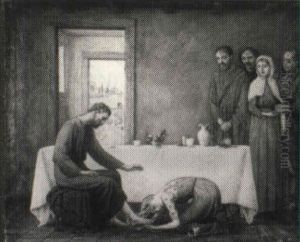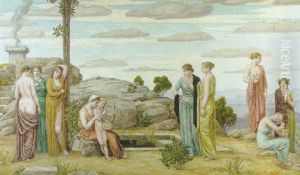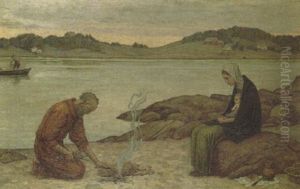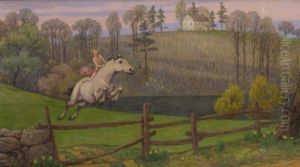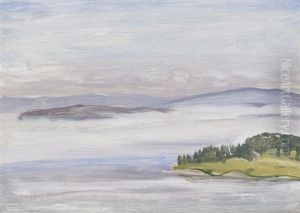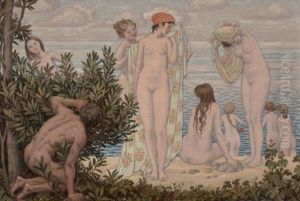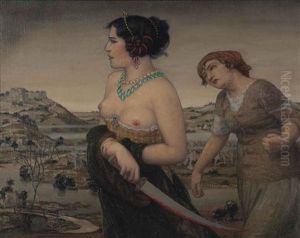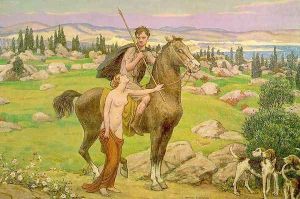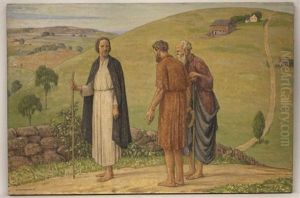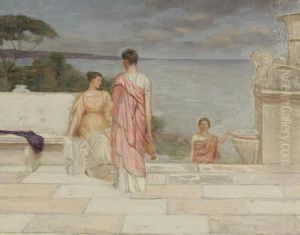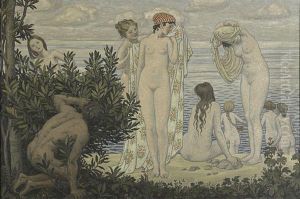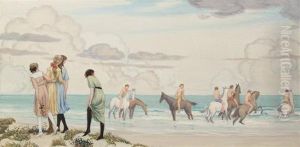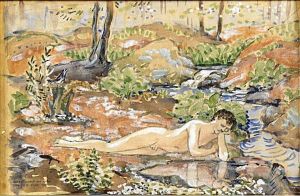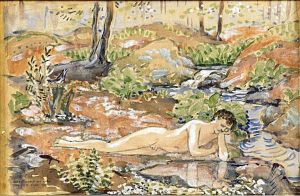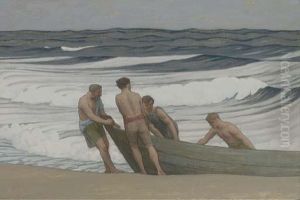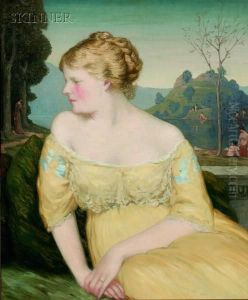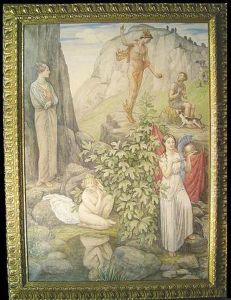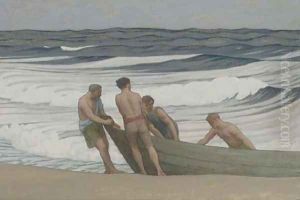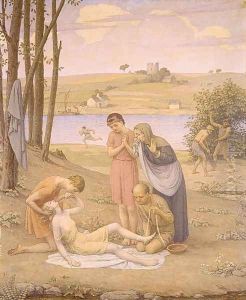Bryson Burroughs Paintings
Bryson Burroughs was an American painter, illustrator, and curator, known for his contributions to American art in the late 19th and early 20th centuries. Born in 1869, Burroughs grew up in a period of significant change and development in the United States, which influenced his artistic direction and interests. He showed an early aptitude for art, prompting him to pursue formal education in the field.
Burroughs studied art at various prestigious institutions, including the School of the Museum of Fine Arts, Boston, and later, in Paris at the Académie Julian, a popular institution among American and international artists at the time. His education in Europe exposed him to the works of the Old Masters, as well as contemporary movements, shaping his style and approach to painting.
Upon returning to the United States, Burroughs began to establish himself as a painter. His works often depicted classical themes, mythological subjects, and allegorical scenes, characterized by their delicate treatment, detailed execution, and a somewhat dreamlike quality. Despite the changing trends in art during his lifetime, including the rise of Modernism, Burroughs remained committed to his distinctive style, rooted in classical and Renaissance traditions.
In addition to his work as an artist, Bryson Burroughs made significant contributions to the art world as a curator. In 1909, he was appointed as the curator of paintings at the Metropolitan Museum of Art in New York, a position he held until his death in 1934. During his tenure, he was instrumental in expanding the museum's collection, acquiring important works, and organizing significant exhibitions that helped to educate the public and elevate the status of American art. His vision and dedication were pivotal in establishing the Metropolitan Museum of Art's reputation as a leading institution in the field.
Burroughs' dual legacy as both a painter and a curator left a lasting impact on the American art scene. Despite not achieving the same level of fame as some of his contemporaries, his contributions to the arts, both through his own creations and his work at the Metropolitan Museum, have been recognized as invaluable. Bryson Burroughs passed away in 1934, leaving behind a body of work that continues to be appreciated for its beauty and classical sensibility.

